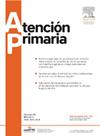初级保健中腹主动脉动脉瘤患病率的研究
IF 1.6
4区 医学
Q2 MEDICINE, GENERAL & INTERNAL
引用次数: 0
摘要
目的了解Maspalomas基本卫生区65 ~ 75岁男性中当前或曾经吸烟的腹主动脉瘤(AAA)病例的百分比。我们的次要目标是确定我们样本中AAA发展的已知危险因素的分布,并促进早期转介到适当的血管外科服务。我们还旨在描述动脉瘤下病例的百分比,在我们的中心提供超声随访。设计:这是一项横断面、描述性、观察性患病率研究。在Maspalomas健康中心设置初级保健水平。参与者年龄在65-75岁之间,从Maspalomas Basic Health Zone的计算机登记系统要求的名单中被诊断为目前或曾经的吸烟者。本研究的样本量为200例患者,如果在不同时间拨打3次电话均未收到应答或符合排除标准,则选择名单上的下一位患者,未发生减员现象。主要测量作为主要研究变量,我们根据OTO标准将卡钳放置在直径最大的区域,收集腹主动脉的正、横直径,以及动脉瘤时的纵直径。同时记录动脉粥样硬化斑块的存在与否(无论是否发现动脉瘤)和AAA的形态(如果存在)。在关联和危险因素的数据登记中,我们包括:年龄、包年指数、吸烟年数和戒烟年数(少于5年、5至10年或超过10年)。其他有“是”或“否”两种反应的危险因素有:高血压、糖尿病、高胆固醇血症、心肌梗死、腹部动脉瘤家族史、其他水平的个人动脉瘤史、外周动脉疾病的存在,以及抗高血压治疗的次数。结果本组65 ~ 75岁男性吸烟者或已戒烟者中,确诊AAA 14例,其中已知8例。这相当于患病率为7%(95%置信区间:4,2-11,4%)。此外,6.5% (95% CI: 3,8-10,8%)的样本有动脉瘤下主动脉。在评估的危险因素中,具有显著相关性的危险因素包括AAA家族史(P值为0.002)、个人其他级别动脉瘤史(P值为0.010)、外周动脉疾病症状(P值为0.022),以及在对动脉瘤和动脉瘤下主动脉进行分组后,外周动脉疾病史(P值为0.033)。结论在我们的研究中,男性吸烟者或前吸烟者的腹主动脉瘤患病率为7.0% (95% CI: 4,2-11,4%),动脉瘤下主动脉患病率为6.5% (95% CI: 3,8-10,8%),均高于预期。这些发现突出了在初级保健中使用超声作为管理吸烟者和前吸烟者的全面和主动方法的一部分的价值。本文章由计算机程序翻译,如有差异,请以英文原文为准。
Estudio de prevalencia de aneurisma de aorta abdominal en Atención Primaria
Aim
To describe the percentage of abdominal aortic aneurysm (AAA) cases in the Maspalomas Basic Health Zone among males aged 65 to 75 years who are current or former smokers. Our secondary objectives were to define the distribution of known risk factors for AAA development in our sample and to facilitate early referral to the appropriate vascular surgery service. We also aim to describe the percentage of subaneurysm cases, offering ultrasound follow-up at our center.
Design
This is a cross-sectional, descriptive, observational prevalence study.
Setting
Primary care level at the Maspalomas Health Center.
Participants
Men aged 65-75 years diagnosed as current or former smokers from the list requested from the computerized registration system of the Maspalomas Basic Health Zone. The sample size was 200 patients, and no attrition occurred, as the next patient on the list was selected if no response was received after 3 phone calls at different times or if exclusion criteria were met.
Main measurements
As main study variable, we collected the anteroposterior and transverse diameters of the abdominal aorta, as well as the longitudinal diameter in case of an aneurysm, according to the OTO criterion of placing the calliper in the area with the largest diameter. The presence or absence of atherosclerotic plaque (regardless of the finding of an aneurysm) and the morphology of the AAA, if present, were also recorded. Within the registry of data on affiliation and risk factors, we included: age, pack-year index, years as a smoker and years as an ex-smoker (less than 5 years, between 5 and 10 years, or more than 10 years). Other risk factors with a dichotomous «yes» or «no» response were: high blood pressure, diabetes mellitus, hypercholesterolemia, myocardial infarction, family history of abdominal aneurysm, personal history of aneurysm at another level, and presence of peripheral arterial disease, as well as the number of antihypertensive treatments.
Results
Among male smokers or former smokers aged 65 to 75 years in our sample, 14 cases of AAA were identified, of which 8 were already known. This corresponds to a prevalence of 7% (95% confidence interval: 4,2-11,4%). Additionally, 6,5% (95% CI: 3,8-10,8%) of the sample had a subaneurysmal aorta. Of the risk factors assessed, those with significant associations included a family history of AAA with a P value of 0,002, a personal history of aneurysm at another level with a P value of 0,010, symptoms of peripheral artery disease with a P value of 0,022, and after grouping aneurysms and subaneurysmal aortas, a history of peripheral artery disease with a P value of 0,033.
Conclusions
The prevalence of abdominal aortic aneurysm in our study among male smokers or former smokers was 7,0% (95% CI: 4,2-11,4%), and the prevalence of subaneurysmal aorta was 6,5% (95% CI: 3,8-10,8%), both higher than expected. These findings highlight the value of using ultrasound in primary care as part of a comprehensive and proactive approach to managing smokers and former smokers.
求助全文
通过发布文献求助,成功后即可免费获取论文全文。
去求助
来源期刊

Atencion Primaria
医学-医学:内科
CiteScore
2.90
自引率
8.00%
发文量
156
审稿时长
33 days
期刊介绍:
Atención Primaria es una revista que publica trabajos de investigación relativos al ámbito de la atención primaria de salud. Desde el punto de vista conceptual, Atención Primaria asume el nuevo modelo de atención primaria de salud, orientado no sólo a la curación de la enfermedad, sino también a su prevención y a la promoción de la salud, tanto en el plano individual como en el de la familia y la comunidad. En estos nuevos aspectos que definen el modelo de atención primaria de salud es en los que se centran los trabajos de investigación que publica Atención Primaria, la primera revista de originales española creada para recoger y difundir la producción científica realizada desde los centros de atención primaria de salud sobre cuestiones como protocolización de la asistencia, programas de prevención, seguimiento y control de pacientes crónicos, organización y gestión de la asistencia primaria, entre otros.
 求助内容:
求助内容: 应助结果提醒方式:
应助结果提醒方式:


